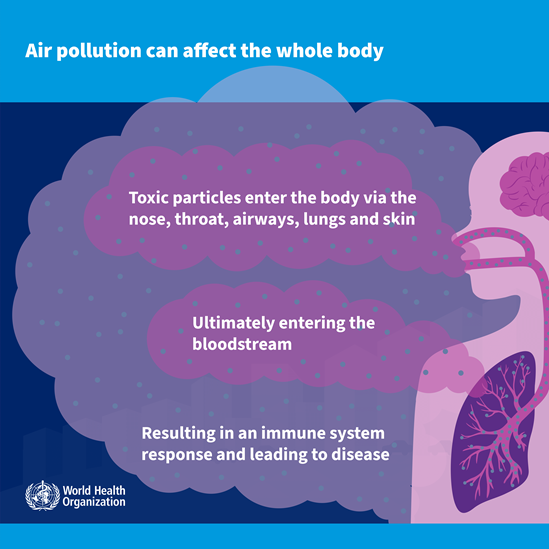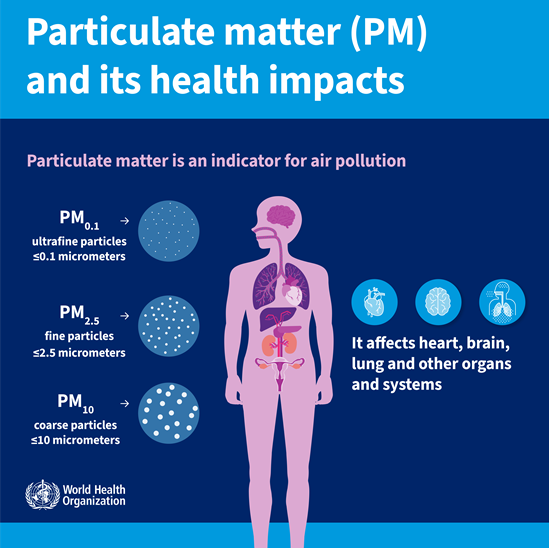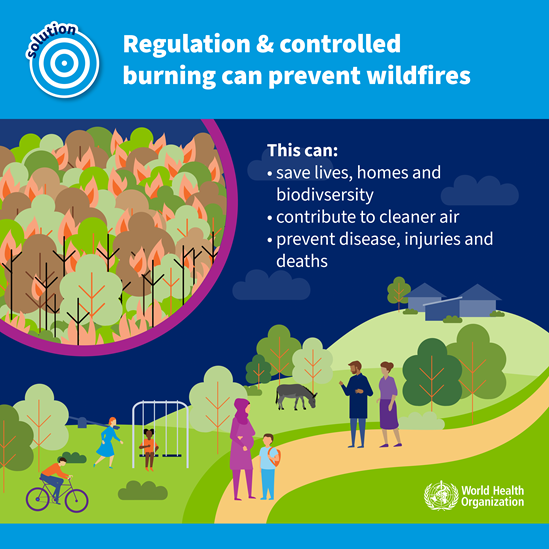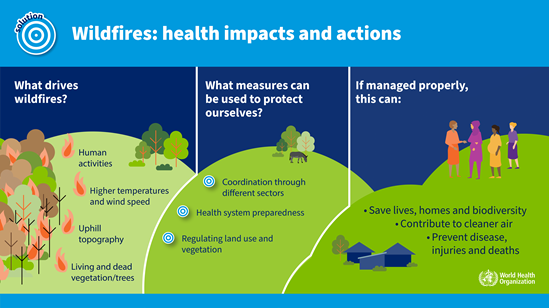
How air pollution is destroying our health
Air quality monitoring → Air quality monitoring in low- and middle-income countries needs to be strengthened, especially in areas close to hospitals, schools, and workplaces. Low-cost sensors and other new technologies can expand air quality monitoring and forecasting to areas that are currently underserved. New protocols and standards are needed to guide the effective use and interpretation of data produced by low-cost sensors in citizen science and other applications.
WHO data show that almost all of the global population (99%) breathe air that exceeds WHO guideline limits and contains high levels of pollutants, with low- and middle-income countries (LMIC) suffering from the highest exposures.
Ambient (outdoor) air pollution in both cities and rural areas is causing fine particulate matter which results in strokes, heart diseases, lung cancer, and acute and chronic respiratory diseases.
Additionally, around 2.6 billion people are exposed to dangerous levels of household air pollution from using polluting open fires or simple stoves for cooking fuelled by kerosene, biomass (wood, animal dung and crop waste) and coal.
Health impacts of air pollution
There are two main types of air pollution: ambient air pollution (outdoor pollution) and household air pollution (indoor air pollution). Ambient air pollution is a major environmental health problem affecting everyone in low-, middle-, and high-income countries as its source – combustion of fossil fuel – is ubiquitous. Household air pollution is mainly caused by the use of solid fuels (such as wood, crop wastes, charcoal, coal and dung) and kerosene in open fires and inefficient stoves. Most of these people are poor and live in low- and middle-income countries.
Exposure to smoke from cooking fires causes 3.2 million premature deaths each year, mostly in low- and middle-income countries, where polluting fuels and technologies are used every day, particularly at home for cooking, heating and lighting. Women and children, who tend to spend more time indoors, are affected the most. LMIC also suffer the greatest from exposure ambient air pollution with 3.68 million premature deaths each year, which is almost 8 times the mortality rates in high income countries (0.47 million).
The main pollutants are:
- particulate matter, a mix of solid and liquid droplets, with larger particles (PM10) arising from pollen, sea spray and wind-blown dust from erosion, agricultural spaces, roadways and mining operations, while finer particles (PM2.5) can be derived from primary sources (for example combustion of fuels in power generation facilities, industries or vehicles) and secondary sources (for example chemical reactions between gases)
- nitrogen dioxide (NO2), a gas from combustion of fuels in processes such as those used for furnaces, gas stoves, transportation, industry and power generation;
- sulfur dioxide, another gas mainly from the combustion of fossil fuels for domestic heating, industries and power generation; and
- ozone at ground level, caused by a chemical reaction of gases, such as NO2, in the presence of sunlight. The pollutant that is most commonly monitored by regulatory frameworks and for which a lot of evidence of adverse health impact is available is particulate matter followed by nitrogen dioxide.
Multimedia
All →Reports
All →Health risks of air pollution in Europe: HRAPIE-2 project: updated guidance on concentration–response...
Air pollution remains the leading environmental health risk both regionally and globally, contributing to reduced life expectancy and a wide range of noncommunicable...
WHO strategic approach on air quality, energy access and health
WHO, as the coordinating authority on international health, supports countries in protecting public health through evidence-based policies and actions....
Exposure to air pollution and its associated health impacts are affected by land use practices including their regulation and enforcement. Understanding...
Green spaces: sectoral solutions for air pollution and health
Exposure to green spaces is widely associated with health benefits, including mental (e.g. reduced risk of depression and anxiety), physical (e.g. improved...
News
All →











